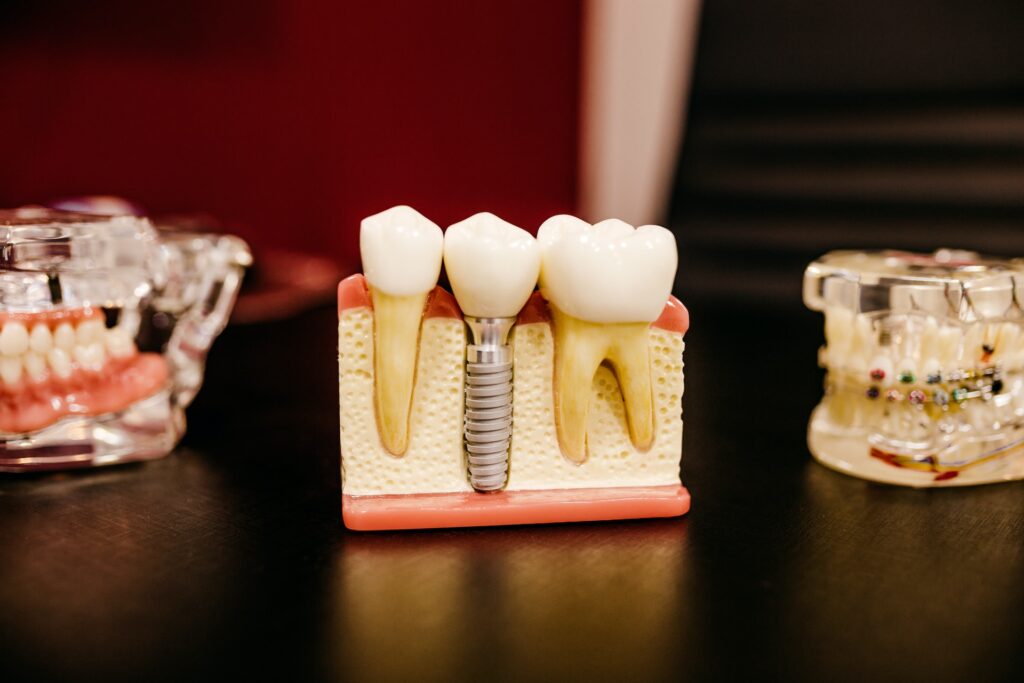Bone grafting is a dental procedure designed to augment and strengthen the jawbone in preparation for dental implant placement. As dental implants rely on a robust and stable foundation, bone grafting plays a crucial role in ensuring the success and longevity of implant-supported restorations. At Chelmsford Dental Specialists Group, our team of experienced dental professionals understands the significance of a strong and healthy jawbone and leverages cutting-edge techniques to deliver optimal bone grafting outcomes. In this comprehensive guide, we will explore the rationale behind bone grafting, explain the different types of bone grafts available, and discuss how this vital procedure can pave the way for successful dental implant placement.
Dental implants are a highly effective and long-lasting solution for replacing missing teeth. However, they require a sufficient amount of healthy jawbone to support the implant and maintain proper osseointegration, the process by which the implant securely fuses with the jawbone. When patients experience bone loss due to factors such as tooth extraction, gum disease, or injury, bone grafting may be necessary to restore the jawbone’s optimal condition and ensure a successful dental implant procedure.
At Chelmsford Dental Specialists Group, our commitment to exemplary dental care and state-of-the-art technology, combined with our patient-centered approach, enables us to provide unparalleled bone grafting and implant-related services. In the following sections, we will delve deeper into the importance of bone grafting in dentistry, explaining its role in rebuilding a solid foundation for dental implant placement and how our skilled professionals can help you navigate the bone grafting process. Let’s embark on the journey toward understanding bone grafting and its significance in achieving lasting, confident smiles.
Why is Bone Grafting Necessary for Dental Implants?
Bone grafting serves a fundamental purpose in preparing the jawbone for dental implant placement. Here are some situations in which bone grafting may be necessary for dental implant candidates:
- Jawbone Deterioration: Tooth loss, gum disease, and trauma can cause the jawbone to deteriorate over time. As a result, dental implants require bone grafting to rebuild the bone to ensure a stable foundation for implant placement.
- Insufficient Bone Volume: Some patients naturally have inadequate jawbone volume to support dental implants, necessitating bone grafting to increase the bone density and create a suitable environment for implant integration.
- Bone Loss Prevention: After tooth extraction, the jawbone begins to deteriorate at the extraction site. Bone grafting can be performed immediately after tooth extraction to preserve the bone structure and facilitate future dental implant placement.
Types of Bone Grafts in Dentistry
Several types of bone grafts are available in dentistry, each with unique characteristics and applications. The choice of bone graft material may depend on the specific needs of the patient and the extent of bone loss:
- Autografts: Autografts involve harvesting bone material from the patient’s own body, typically from the chin, ramus of the jaw, or the hip. Autografts yield the highest success rates, as the harvested bone contains the patient’s native cells, which enhance the integration process.
- Allografts: Allografts consist of bone material obtained from a human donor, which is then processed and sterilized for safe use. Allografts are advantageous for patients who prefer to avoid additional surgical sites or do not have an adequate amount of their own bone available for grafting.
- Xenografts: Xenografts are derived from non-human sources, such as bovine (cow) bone. These graft materials are also processed to ensure compatibility and safety and can provide a stable framework for the patient’s jawbone to regenerate.
- Alloplasts: Alloplasts are synthetic bone graft materials composed of biocompatible and bioresorbable materials, such as hydroxyapatite or tricalcium phosphate. As the patient’s bone regenerates, the alloplastic material is gradually absorbed and replaced by the patient’s own bone.
The Bone Grafting Procedure
The bone grafting procedure follows a series of steps to ensure a successful outcome and proper integration of the graft material:
- Initial Consultation: Your dental professional will evaluate your oral health and medical history to determine if bone grafting is necessary and, if so, which type of bone graft is most appropriate for your needs.
- Graft Preparation: The appropriate bone graft material is selected and prepared, either by harvesting the patient’s own bone or obtaining a suitable donor or synthetic material.
- Surgical Procedure: During the bone grafting procedure, your dental professional will create an incision in the gum tissue to access the underlying jawbone. The bone graft material is then carefully placed into the bone deficiency site, and the surrounding area is sutured closed.
- Recovery and Healing: For several weeks to months following surgery, the patient’s jawbone will undergo a process of osseointegration, during which the graft material fuses to the existing bone, creating a stable foundation for dental implant placement.
- Dental Implant Placement: After the bone graft has successfully integrated and the jawbone has healed, the dental implant can be placed, eventually capped with a customized dental restoration to restore full function and aesthetics.
Caring for Your Bone Graft and Dental Implants
After undergoing a bone graft procedure and subsequent dental implant placement, it is essential to maintain proper oral hygiene and care to ensure the longevity of your dental restoration:
- Practice Good Oral Hygiene: Brush your teeth twice daily, floss daily, and use an antimicrobial mouth rinse to keep your mouth clean and free of bacteria.
- Schedule Regular Dental Checkups and Cleanings: Visit your dental professional for routine checkups and cleanings. This will help detect and address any potential issues with your dental implants or overall oral health.
- Maintain a Balanced Diet: Eating a balanced, nutritious diet promotes overall well-being and supports good oral health, ultimately contributing to the longevity of your dental implants.
Conclusion:
Bone grafting plays a vital role in ensuring the success of dental implant placement, as it provides a stable foundation for the implants to integrate properly. The skilled dental professionals at Chelmsford Dental Specialists Group have the experience and expertise necessary to guide you through the bone grafting process and help you achieve optimal results. If you’re considering dental implants and believe you may require a bone grafting procedure, don’t hesitate to schedule a consultation with our dedicated team. Together, we will work to provide you with comprehensive, personalized care, ensuring a healthy, radiant smile for years to come.




